Flour is a staple in my kitchen. All-purpose, bread, whole wheat, rye, spelt, einkorn, etc., the pantry sorta looks like a mini grocery store dedicated to flour.
But not just any flour. Flours with a few specific qualities. The type of flour I use in my sourdough & discard recipes is one of the biggest decisions I could make as both a baker & Nutritionist.
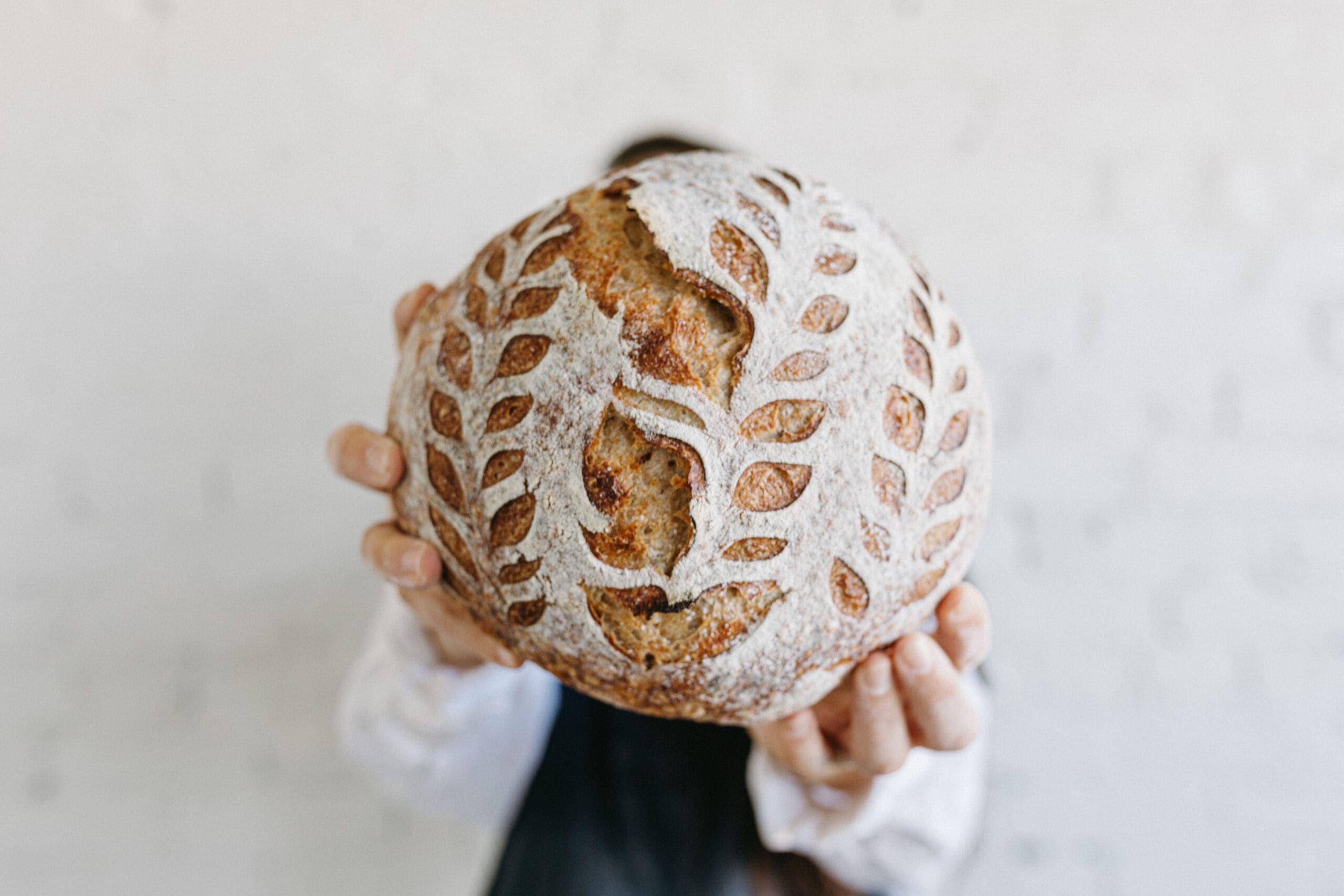
The importance of flour quality
With all food, the choices we make in our kitchen are important when it comes to nurturing our bodies, our mind, & our overall well-being.
Of course, this includes the food itself, like adding more vegetables & choosing specific proteins. But, the general quality of those foods plays a pivot role as well. Things like where it came from, how it was cared for, climate conditions, whether it’s in season or out of season, how fresh it is, the list goes on. All of these factors contribute to the overall nutrient profile of a food item & the potential effects it may have for you, the one consuming it!
This is especially true for flour – an ingredient that doesn’t exactly have a good reputation for being nutritious. But, there’s always more to the picture…
Before we toss it out completely & further demonize flour (I’m sure we’ve all seen it), I think it’s important to call out two things:
1) Flour is an important part of our culinary evolution. It was (and is) an accessible source of energy & sustenance that many depended on & still do. For that alone, it deserves respect!
2) Flour is made of wheat, which is a grain, & grains DO provide nutritional value. But, the quality of those grains & the conditions they were processed in, have a great impact on the flavor, color, crumb, & nutrient value of our breads, pastries, & beyond.
Certainly, there are conditions in which consuming wheat is not in someone’s best interest. Like a wheat allergy, Celiac Disease, or another autoimmune condition. But for many, we can often digest these foods fine & receive the nutrients from them when considering just a few things.

What to look for when buying flour
Here are 8 common things I like to consider before buying flour to ensure I’m getting the highest quality I can find, with the greatest nutrient benefit.
Grain Selection: Heritage or Modern
Heritage grains, also known as heirloom grains, are a subtype of ancient grains that have not been genetically modified or hybridized by humans. They’re in their most natural form & have been around for thousands of years. Modern grains, on the other hand, are created to resist disease & produce a higher yield. Therefore, they’re not in their most natural state. As the name suggests, they’ve been around for a much shorter time frame. I like to buy heritage grain products / flours as much as possible given that they generally, haven’t been modified.
Examples of Heritage Grain:
- Rye
- Buckwheat
- Spelt
- Red fife
Examples of Modern Grain:
- Corn
- Barley
- Certain wheat varieties
Milling Method: Stone-milled vs roller-milled
Generally speaking, there are two common ways to mill grain. I’ll touch on these briefly here, but if you’d like a deeper dive, be sure to check out my article comparing the two.
The ancient method (with now, modern advances) involves slowly grinding grain between two large stones to create, stone-milled flour. This method preserves more of the grain & the nutrients that come along with those parts. It’s done at slower speeds & lower temps which further helps to retain the grain’s nutrients.
Roller-milling is a modern milling method that most commercial flour companies use because it’s quick & efficient, producing more flour in a shorter amount of time. The process involves feeding grain through a series of rollers to separate the endosperm from the rest of the kernel. This is the starchy part of the grain, made up of mostly carbohydrates, which makes for a very fine, white, flour. The bran & the germ are removed in this process which contain most of the grains nutrients, leaving behind a hyper-palatable flour with fewer nutrients. These rollers also generate a lot of heat which can further lead to a loss of nutrients.
Protein content
Yes, there is protein in flour! Comparably speaking, it’s much lower than something like meat or eggs, but it’s an important component of flour. In fact, it’s one of the ways bakers determine which kind of flour to use. As a good rule of thumb, the higher the protein percentage, the stronger the flour. So, something like a loaf of bread (strong & sturdy) will have a higher protein flour than say, a pie crust (flaky & delicate). This is because protein is directly related to gluten structure.
Gluten is a complex web of proteins, primarily gliadin & glutenin. When combined with water, these proteins are essentially ‘activated’ & begin to form a strong, elastic network that gives your dough structure & strength. So, the higher the protein, the greater the potential for gluten to develop.
The type of wheat being milled is generally what determines the protein content. For example, Soft Red Winter Wheat might be used to make all-purpose flour whereas bread flour might be made of Hard Red Winter Wheat.
General protein percentages: Note that these will vary depending on the company, most will indicate the % on the bag.
All-purpose flour: 9-12%
Bread flour: 12-14%
Whole wheat flour: 12-14%
Cake flour: 6-8%
Semolina flour: 13-14%
Organically grown
There are many reasons why buying organic foods is a good option whenever it’s possible. Were talking improved soil health, reduced exposure to synthetic chemicals for both yourself & those cultivating the crops, often better animal welfare, & higher nutrient value. Grains in particular are heavily contaminated so purchasing organic options when you’re able to, can leave behind a huge impact.
Bleach vs unbleached
I’m sure you’ve seen flour bags that say ‘unbleached’ or maybe, you’ve even seen bleached. This means that the flour was or was not bleached with either chlorine or benzoyl peroxide to make it fluffier, softer, & lighter in color. While I don’t think any of us want to actively consume bleach, it’s important to know that it can be in your flour. This can damage the starch & proteins & ultimately, is a synthetic chemical the body then has to try & detoxify.
Enriched or not?
You’ll often see this label on commercial flours made by roller mills & / or a flour that was bleached. Enriching the flour is done by adding back nutrients that were lost during the milling process. In theory, this is great. But, isolating specific nutrients & adding them to a foreign product begs the question: does it have the same health benefits as a flour that didn’t have those nutrients stripped in the first place? I don’t know… but, I think it’s reason enough to question. Generally, this step is unnecessary if you’re sourcing from local farms that take extra steps to care for their soil & the health of their grain, as well as millers who utilize stone milling practices since the flour naturally has a higher nutritional value.
Freshness
Not all companies will put a mill date on their bags, but some do, especially local producers. With any food, a fresher product likely brings a higher nutritional value – the longer food sits, the older it gets, & the more nutrients it loses. This is especially important if you’re purchasing stone-milled flours as the oils & nutrients are very fragile, too much light & heat exposure can cause these flours to spoil faster. Buying smaller amounts more frequently can help to make sure your flour is fresh & lively.
Buying locally
Whenever you can, I always encourage purchasing flour from a local farmer or miller. They may not all use stone milling techniques, but, it’s likely the grains were better cared for, as well as the soil they were grown in. By purchasing locally, your food has less distance to travel & creates an opportunity for you to get to know the people who bring your food to life! It’s a neat experience that can help to bring us all a little closer to the food on our plates.
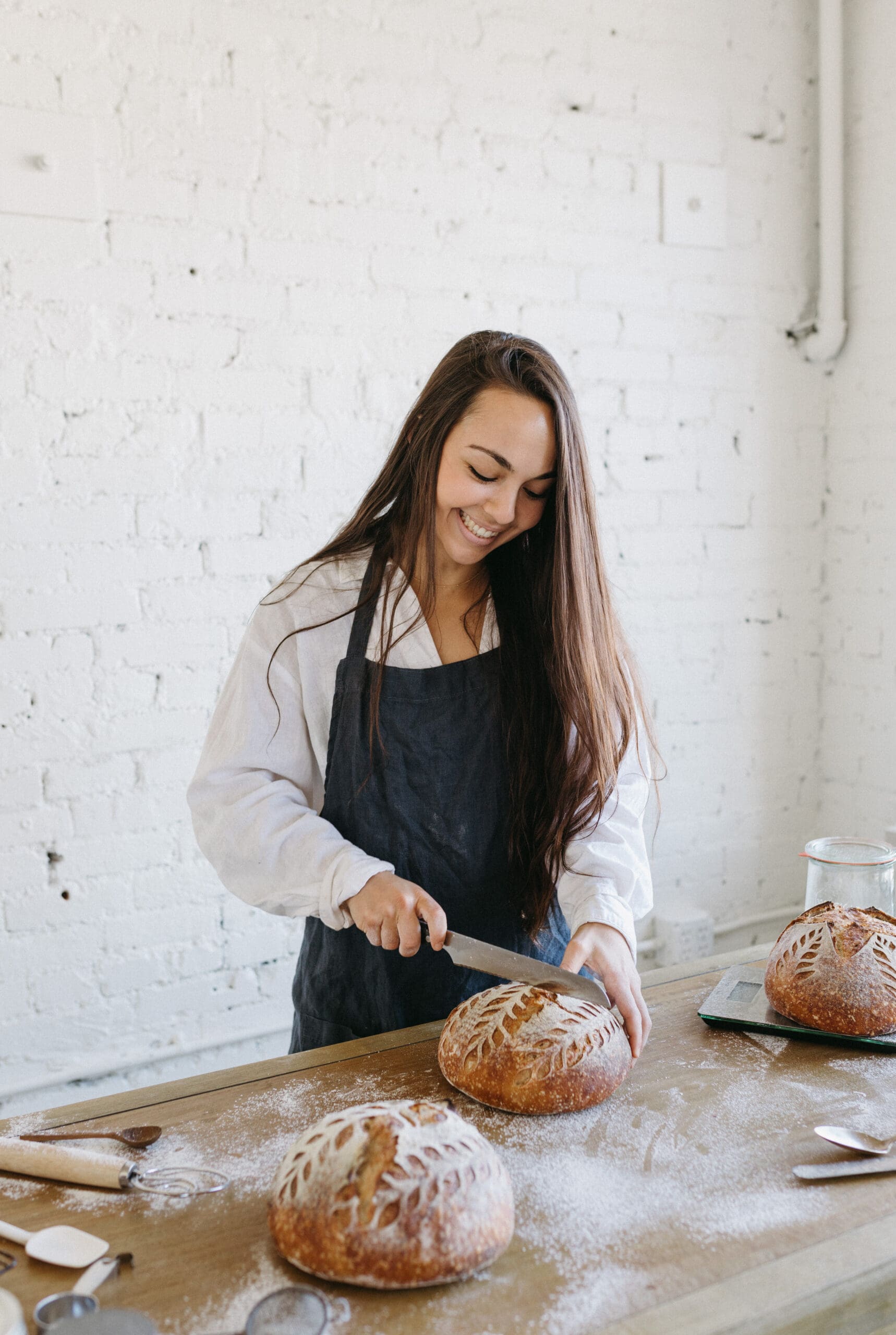
Here’s the flour I use every day:
If you’ve been here a while, you’ve probably heard me mention Cairnspring Mills – a flour company that’s quite literally in my backyard.
Based out of Skagit Valley here in Washington, they mill beautiful stone-ground flours using locally harvested grain. I’ve received many comments about the flavor of my loaves & Cairnspring Mills is truly the one to thank for this. Their flours are nutrient-rich & create a dark, uniquely rustic loaf. I’ve been baking with their flours for 4 years & will continue singing their praises. If you’d like to try, use code MCKENNA15 & take 15% off your next purchase. PS – they ship nationally!
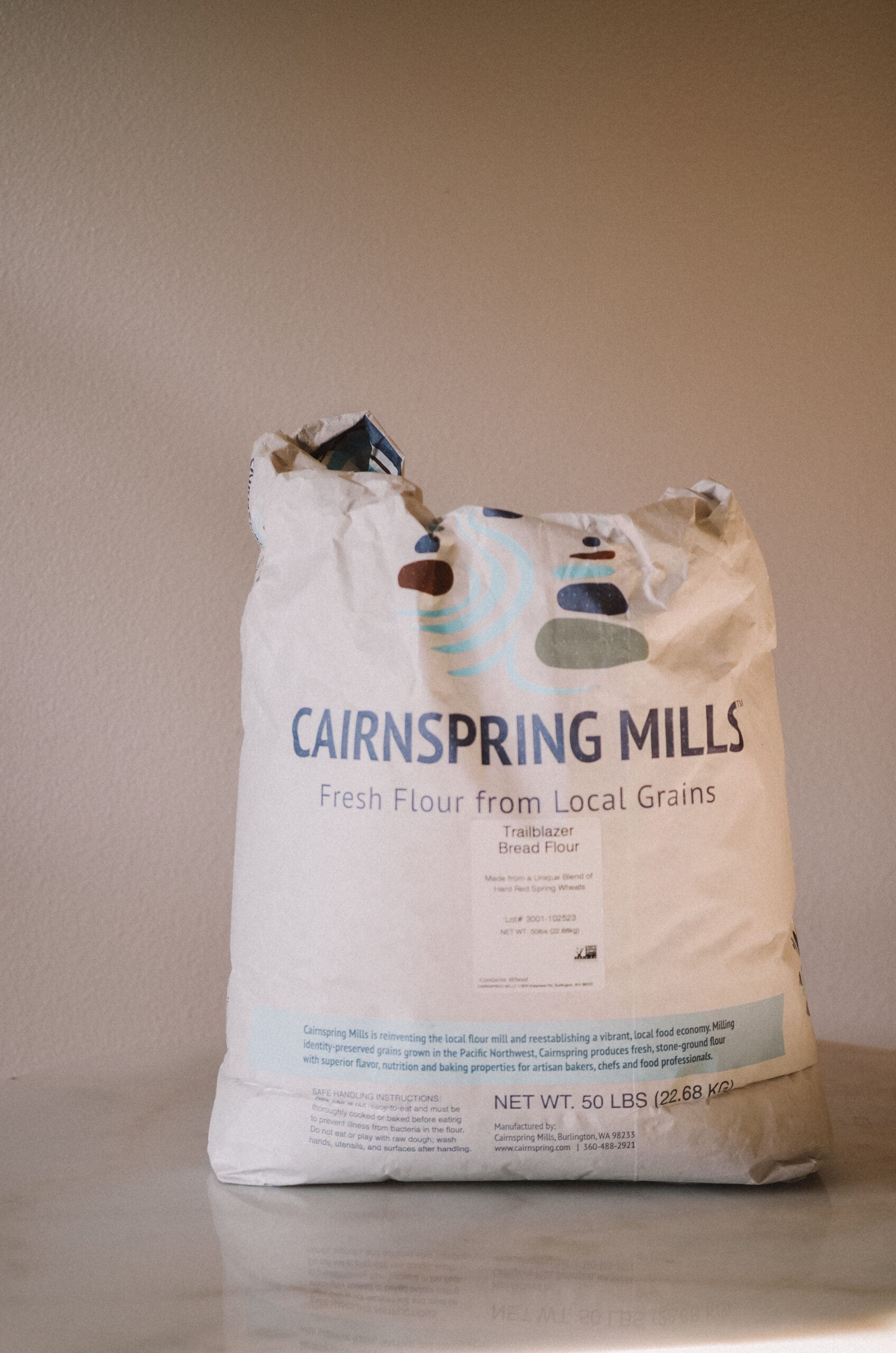
Final thoughts
The biggest takeaway I hoped to share with this article is that with any food, we must consider its quality. And this is especially important for the foods we tend to judge, like flour, or sugar.
Most foods, in their natural state, provide some nutritional value. Oftentimes, it’s what we as humans do to the foods that can change how we ultimately respond to them.
One final note, by giving wheat a little more grace & understanding, we change the way we think about that food, which then further impacts how we digest & absorb it!
It really is all connected.
McKenna
Holistic Nutritionist, CSCS
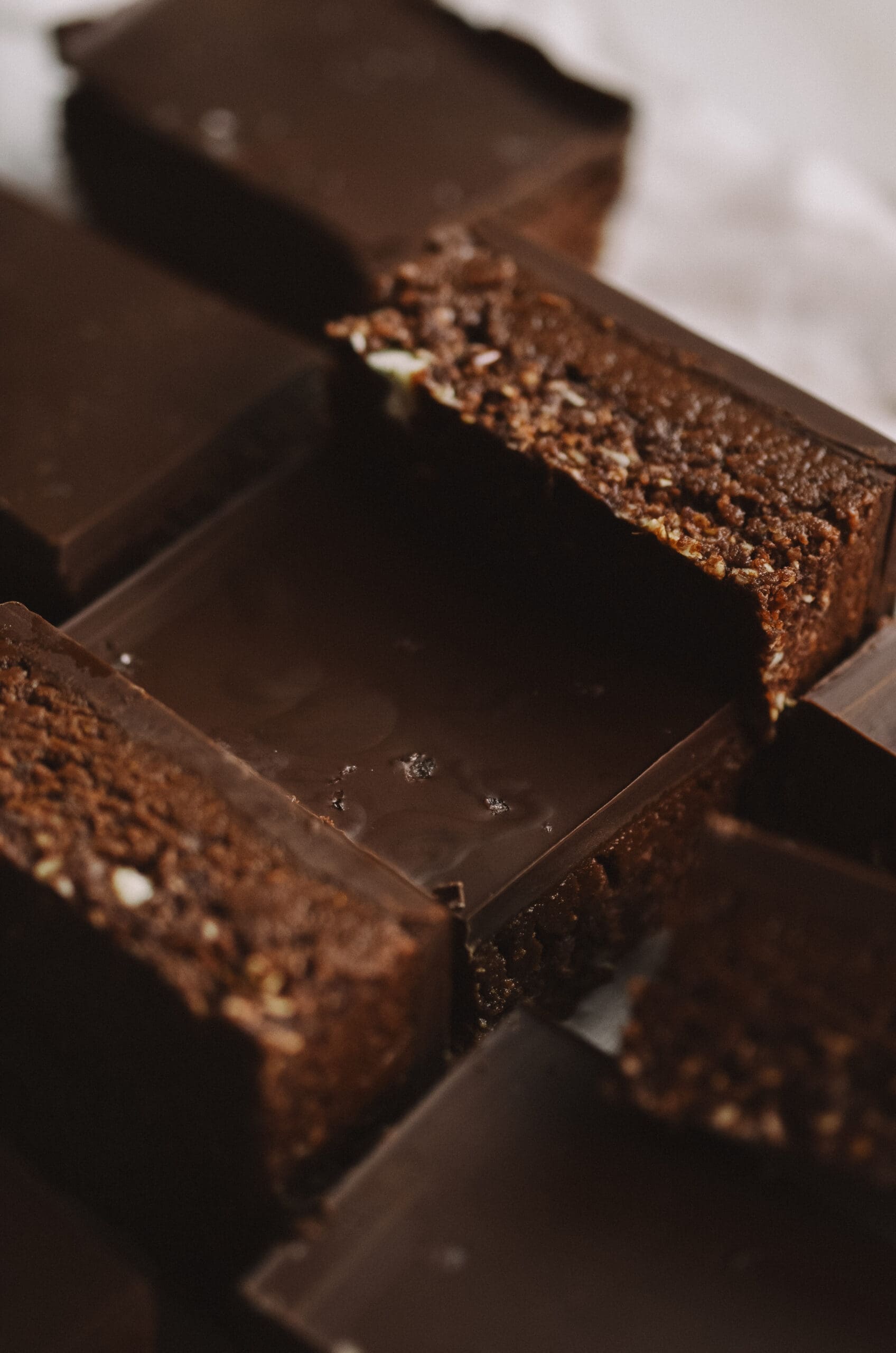

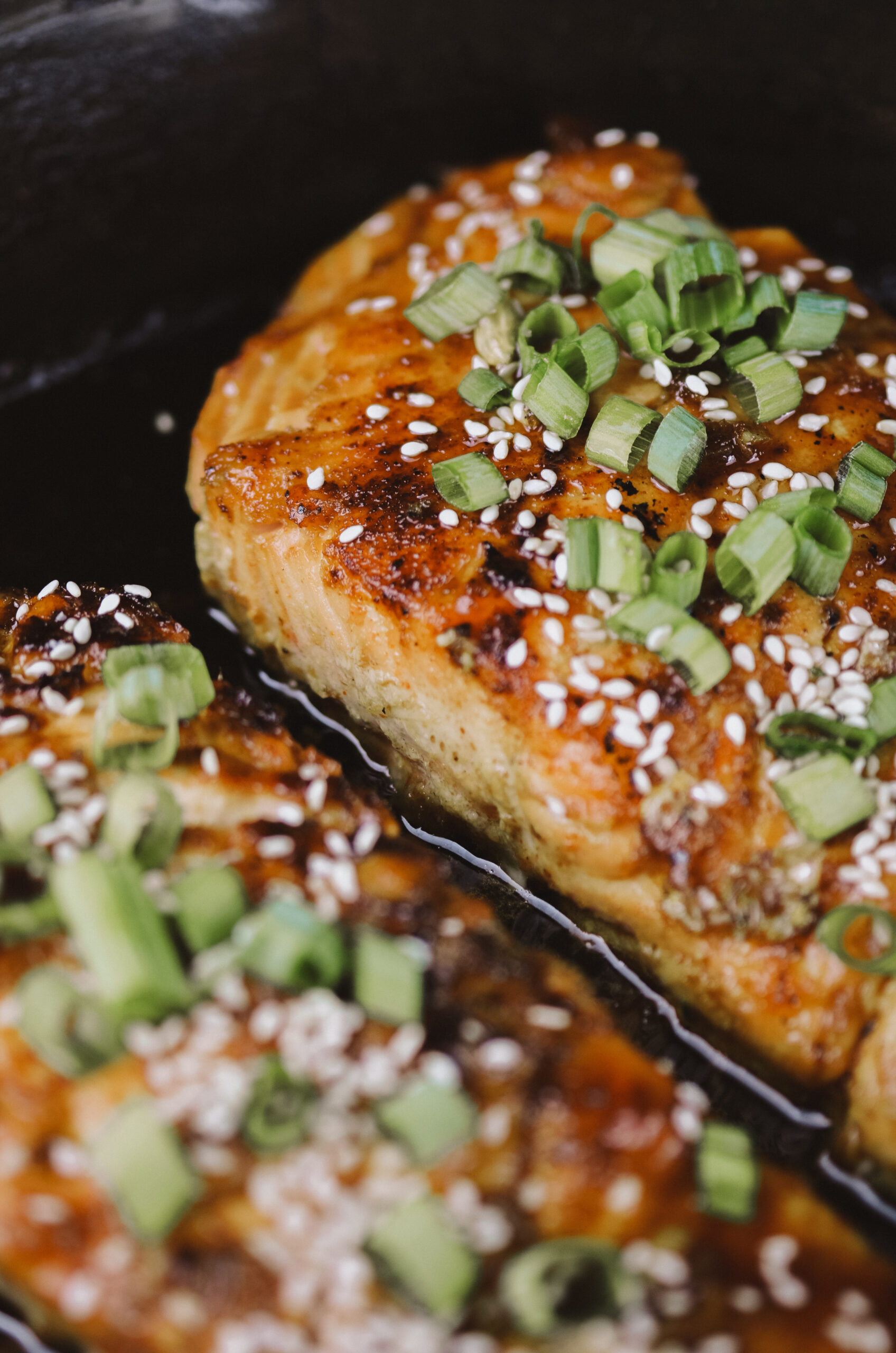




Be the first to comment